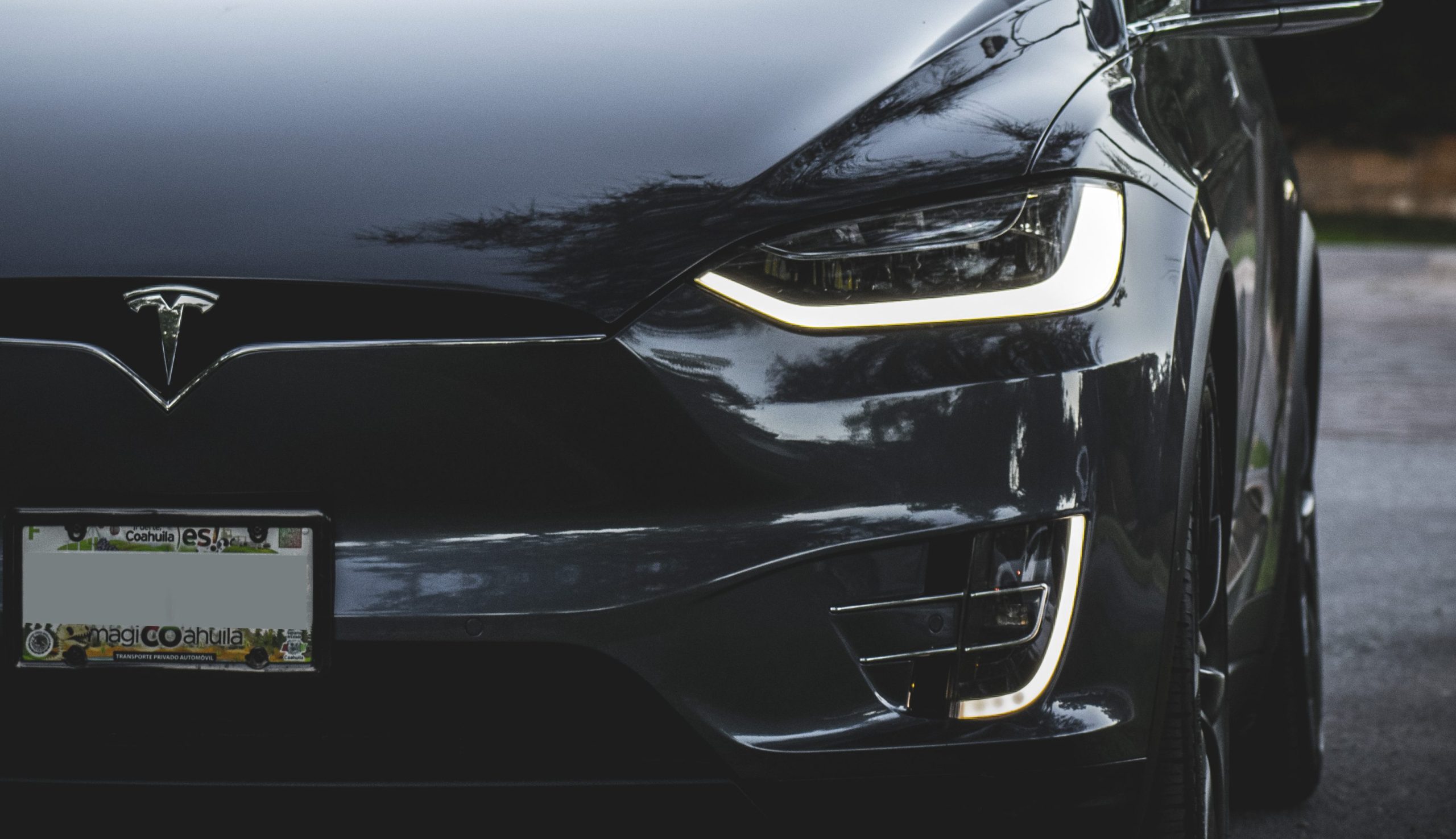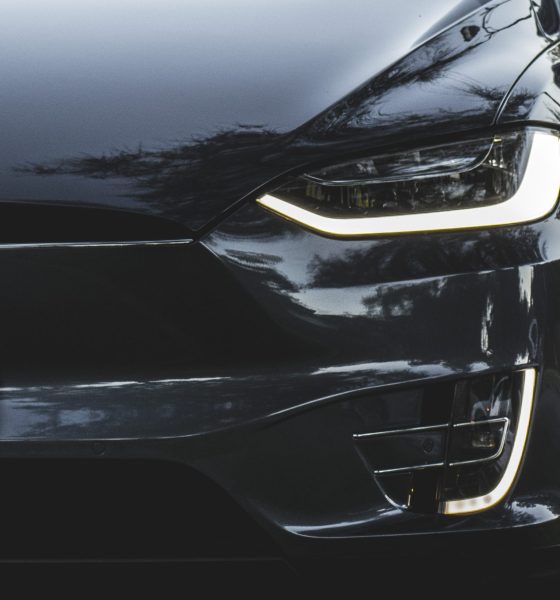

Investor's Corner
Jim Cramer gives inside look at how a Tesla skeptic turns into a TSLA bull
If one were to watch some videos about Tesla back in 2010, one would probably encounter videos of Mad Money host Jim Cramer advising long term investors to stay away from the electric car maker. For a while, Cramer was a Tesla skeptic, at some points even trading barbs with Elon Musk on Twitter. But eventually, Cramer announced that he was no longer bearish against the company, and since then, he has become one of TSLA’s most vocal bulls.
In a recent conversation with Rob Maurer of the Tesla Daily podcast, Cramer shared the inside story behind his change from a bearish skeptic into a full-on TSLA bull. According to the Wall Street veteran, his shift has been nothing short of a religious conversion, and it involved experiences with his daughter, wife, and close friends in the financial sphere.
The Mad Money host noted that one of his initial experiences with Tesla involved his daughter, who drove from Oregon to California. Cramer noted that his daughter was not a car person at all, but she proved very enthusiastic about the all-electric car. This is quite remarkable, as Cramer noted that Tesla essentially turned his daughter into a car enthusiast.
“I think what happened was basically a religious conversion. I went out to California. My daughter had just driven a Tesla from Oregon from where she was living to Los Angeles, and she talked about charging, talked about how fun it was, talked about the flatulence button, and said, you know, ‘Dad, I’ve been driving for 12 years, I’ve never cared about what I drove. It’s never been important.’ She had a beat-up 2008 Ford Fiesta that she’d been driving. She just wasn’t a car person. But Tesla made her into a car person,” he said.
The same enthusiasm over Tesla’s vehicles was interestingly shared by his wife, according to Cramer. Unlike his daughter, his wife is an avid car person, and she loved the company’s all-electric vehicles. But ultimately, the experience that truly changed the Mad Money host’s mind about Tesla was a drive he had with two friends who were Tesla owners. Cramer noted that when he mentioned what he believed were weaknesses in Tesla’s financials, his friend, who was a former CFO, pointed out that the company could raise $2 billion in a snap. That, according to Cramer, was his conversion.
“Then I went out to see a couple of friends of mine. One an executive in a Silicon Valley company, another, a former CFO, and they had all Teslas. And my wife, who is a complete car person, I mean a nut car person, just loves it. Her favorite thing is a ’94 Range Rover that she has. She said, ‘This is it.’ She drove it, and she said, ‘This is it.’ Now we have not bought one yet because she’s frugal enough to be able to say ‘Listen, Jim, you should buy it because you live in Summit, New Jersey, and you can use it as a go-around car.’
“But when I was driving with it, (with) the person who was a retired CFO, I said ‘You know what, my daughter loves it, my wife loves it, it’s so cool, but they don’t have the financials that make it so that I can recommend it at 260 (per share).’ And he looked at me and goes ‘Jim, they could raise $2 billion (just) like that.’ That was a religious conversion. The conversion was right there. Because then, I knew that the balance sheet was not in question,” he said.
Ultimately, Cramer stated that it came to the point where he realized that it was futile to fight progress. And as it turned out, his bullish turn proved to be the correct decision. According to the Mad Money host, surrendering and recommending Tesla became his best call this year. “I said, what am I doing? Why am I fighting progress? So I surrendered, and it’s the best call I’ve made this year.”
Watch Jim Cramer and Rob Maurer’s Tesla recent discussion in the video below.

Investor's Corner
Tesla stock closes at all-time high on heels of Robotaxi progress

Tesla stock (NASDAQ: TSLA) closed at an all-time high on Tuesday, jumping over 3 percent during the day and finishing at $489.88.
The price beats the previous record close, which was $479.86.
Shares have had a crazy year, dipping more than 40 percent from the start of the year. The stock then started to recover once again around late April, when its price started to climb back up from the low $200 level.
This week, Tesla started to climb toward its highest levels ever, as it was revealed on Sunday that the company was testing driverless Robotaxis in Austin. The spike in value pushed the company’s valuation to $1.63 trillion.
Tesla Robotaxi goes driverless as Musk confirms Safety Monitor removal testing
It is the seventh-most valuable company on the market currently, trailing Nvidia, Apple, Alphabet (Google), Microsoft, Amazon, and Meta.
Shares closed up $14.57 today, up over 3 percent.
The stock has gone through a lot this year, as previously mentioned. Shares tumbled in Q1 due to CEO Elon Musk’s involvement with the Department of Government Efficiency (DOGE), which pulled his attention away from his companies and left a major overhang on their valuations.
However, things started to rebound halfway through the year, and as the government started to phase out the $7,500 tax credit, demand spiked as consumers tried to take advantage of it.
Q3 deliveries were the highest in company history, and Tesla responded to the loss of the tax credit with the launch of the Model 3 and Model Y Standard.
Additionally, analysts have announced high expectations this week for the company on Wall Street as Robotaxi continues to be the focus. With autonomy within Tesla’s sights, things are moving in the direction of Robotaxi being a major catalyst for growth on the Street in the coming year.
Elon Musk
Tesla needs to come through on this one Robotaxi metric, analyst says
“We think the key focus from here will be how fast Tesla can scale driverless operations (including if Tesla’s approach to software/hardware allows it to scale significantly faster than competitors, as the company has argued), and on profitability.”

Tesla needs to come through on this one Robotaxi metric, Mark Delaney of Goldman Sachs says.
Tesla is in the process of rolling out its Robotaxi platform to areas outside of Austin and the California Bay Area. It has plans to launch in five additional cities, including Houston, Dallas, Miami, Las Vegas, and Phoenix.
However, the company’s expansion is not what the focus needs to be, according to Delaney. It’s the speed of deployment.
The analyst said:
“We think the key focus from here will be how fast Tesla can scale driverless operations (including if Tesla’s approach to software/hardware allows it to scale significantly faster than competitors, as the company has argued), and on profitability.”
Profitability will come as the Robotaxi fleet expands. Making that money will be dependent on when Tesla can initiate rides in more areas, giving more customers access to the program.
There are some additional things that the company needs to make happen ahead of the major Robotaxi expansion, one of those things is launching driverless rides in Austin, the first city in which it launched the program.
This week, Tesla started testing driverless Robotaxi rides in Austin, as two different Model Y units were spotted with no occupants, a huge step in the company’s plans for the ride-sharing platform.
Tesla Robotaxi goes driverless as Musk confirms Safety Monitor removal testing
CEO Elon Musk has been hoping to remove Safety Monitors from Robotaxis in Austin for several months, first mentioning the plan to have them out by the end of 2025 in September. He confirmed on Sunday that Tesla had officially removed vehicle occupants and started testing truly unsupervised rides.
Although Safety Monitors in Austin have been sitting in the passenger’s seat, they have still had the ability to override things in case of an emergency. After all, the ultimate goal was safety and avoiding any accidents or injuries.
Goldman Sachs reiterated its ‘Neutral’ rating and its $400 price target. Delaney said, “Tesla is making progress with its autonomous technology,” and recent developments make it evident that this is true.
Investor's Corner
Tesla gets bold Robotaxi prediction from Wall Street firm
Last week, Andrew Percoco took over Tesla analysis for Morgan Stanley from Adam Jonas, who covered the stock for years. Percoco seems to be less optimistic and bullish on Tesla shares, while still being fair and balanced in his analysis.

Tesla (NASDAQ: TSLA) received a bold Robotaxi prediction from Morgan Stanley, which anticipates a dramatic increase in the size of the company’s autonomous ride-hailing suite in the coming years.
Last week, Andrew Percoco took over Tesla analysis for Morgan Stanley from Adam Jonas, who covered the stock for years. Percoco seems to be less optimistic and bullish on Tesla shares, while still being fair and balanced in his analysis.
Percoco dug into the Robotaxi fleet and its expansion in the coming years in his latest note, released on Tuesday. The firm expects Tesla to increase the Robotaxi fleet size to 1,000 vehicles in 2026. However, that’s small-scale compared to what they expect from Tesla in a decade.
Tesla expands Robotaxi app access once again, this time on a global scale
By 2035, Morgan Stanley believes there will be one million Robotaxis on the road across multiple cities, a major jump and a considerable fleet size. We assume this means the fleet of vehicles Tesla will operate internally, and not including passenger-owned vehicles that could be added through software updates.
He also listed three specific catalysts that investors should pay attention to, as these will represent the company being on track to achieve its Robotaxi dreams:
- Opening Robotaxi to the public without a Safety Monitor. Timing is unclear, but it appears that Tesla is getting closer by the day.
- Improvement in safety metrics without the Safety Monitor. Tesla’s ability to improve its safety metrics as it scales miles driven without the Safety Monitor is imperative as it looks to scale in new states and cities in 2026.
- Cybercab start of production, targeted for April 2026. Tesla’s Cybercab is a purpose-built vehicle (no steering wheel or pedals, only two seats) that is expected to be produced through its state-of-the-art unboxed manufacturing process, offering further cost reductions and thus accelerating adoption over time.
Robotaxi stands to be one of Tesla’s most significant revenue contributors, especially as the company plans to continue expanding its ride-hailing service across the world in the coming years.
Its current deployment strategy is controlled and conservative to avoid any drastic and potentially program-ruining incidents.
So far, the program, which is active in Austin and the California Bay Area, has been widely successful.








